Deep in the heart of Texas, there is a beautiful creature that many people don’t believe can survive their weather conditions. Although they are not the largest species, they are known for their tenacity and ability to adapt to changing environments. If you haven’t guessed it, it’s tree frogs. Sounds surprising? But it’s true!
In fact, tree frogs are so adaptable that they can even be found in urban areas of texas. They’re so tough that these environmental conditions can’t keep them away. Whether you’re hiking through a forest or taking a walk through your neighborhood, keep your eyes peeled for these beautiful creatures.
In this short blog post, you will see everything about the Treefrog in texas.
11 beautiful Tree Frogs in Texas
There are eleven different types of tree frogs in the beautiful state of Ohio. Each of them has its individual attributes that make them unique.
Now let’s take a look at Texas’s tree frogs in the following part…
1. Blanchard’s Cricket Frog
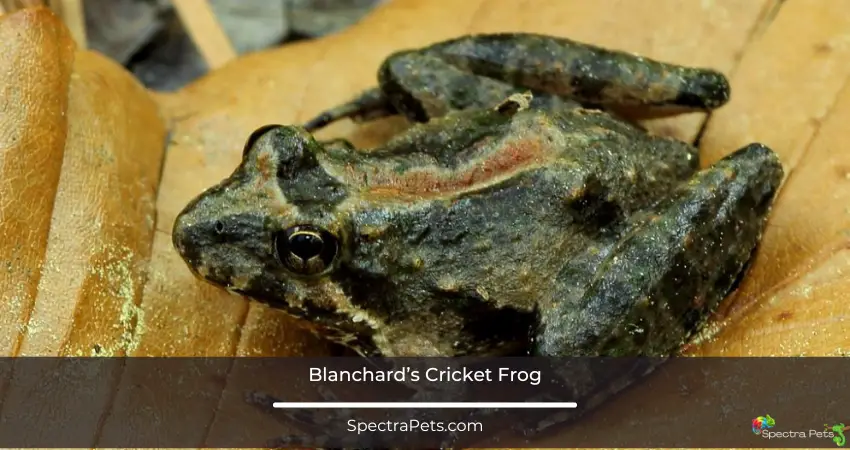
Blanchard’s cricket frog is a small species of frog that is found in the central United States. The frogs are typically green or brown in color, with dark spots on their sides. One of their unique signs is the triangular shape mark between these frogs’ eyes.
In Texas, they prefer to live in areas with plenty of moisture, such as wetlands or near ponds and streams. During the breeding season, the males will sing to attract mates. The female cricket frogs will lay their eggs in water, and the tadpoles will hatch a few days later. With a unique and repetitive call, the male attracts the females. This calling sound is similar to two marbles clicking with each other.
In their adulthood, this species can reach up to 0.6-1.5’’ long. The diet of Blanchard’s cricket frog consists of insects, such as beetles and ants. The average lifespan of these frogs is only 1 year. One adaptation that helps them to survive is their ability to change the color of their skin to match their surroundings. This helps them to avoid predators and blend in with their environment.
Sadly Blanchard’s Cricket Frog population is declining due to habitat loss and chemical contamination of their breeding ground.
2. American green tree frog
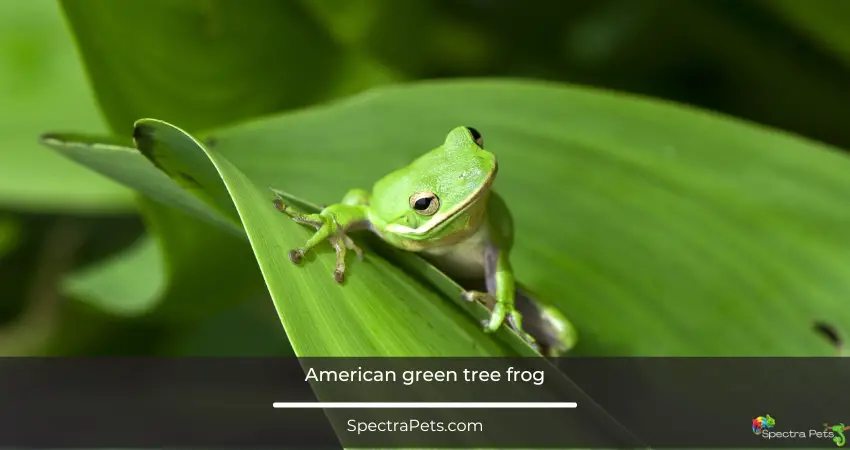
The American green tree frog is a small, smooth-skinned amphibian that is found throughout Texas in the United States.
Adults typically grow to be about two inches long, with females being slightly larger than males. However, their size can vary from 1 & 1/4” up to 2 and 1/2”. The body is bright green, with a white or yellow stripe running down the side of the body. The belly is usually white or pale yellow.
Green tree frogs are found in a variety of habitats, including gardens, wetlands, and woods. In Texas, people often see them in their backyard or pool.
Unlike other frogs, the American green tree frog’s breeding time is a bit unique. They tend to breed in both summer and springtime.
Females lay up to 400 egg leaves mostly on aquatic plants in shallow water. Once the tadpoles hatch, they drop into the water below and begin feeding on algae and small insects. After about two months, they develop into juvenile frogs and leave the water to begin their life on land. Green tree frogs typically live for 2-5 years in the wild, although captive specimens have been known to live for up to 10+ years. One of the reasons for their longevity is their ability to adapt to changing conditions.
Read More: Why do green tree frogs croak?
3. Squirrel tree frog
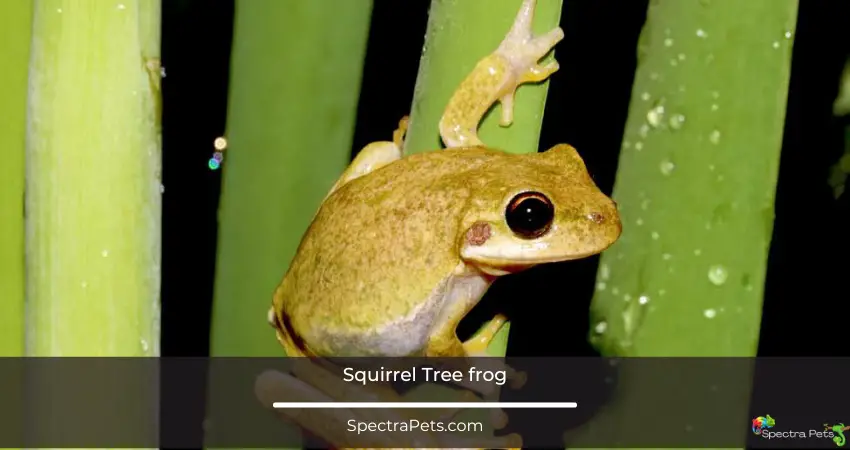
The squirrel tree frog is a small, furry creature that is found in the treetops of tropical forests. Though their size remains between 1-1.5’’ but they are boss-level hunters. Mostly they are green in color, but some frogs can have yellowish to brown too.
Moreover, the squirrel tree frog is active during the day and night, and it feeds on insects. Moreover, another strong skin sign is their upper lips tend to be a bit yellow or whitish stripes.
During the breeding season which remains from March – October, males call out to attract mates. For Breeding grounds, they prefer places like wetlands and small water bodies. The female squirrel tree frog can lay up to 1000 eggs in those high vegetation shallow water.
Along with their natural area, the Squirrel tree frogs are also seen in the western urbanized part of Texas. People of Texas will regularly see them in their backyards. These small frogs love places like pine-oak forests and hardwood forests and floodplains.
The squirrel tree frog has a lifespan of up to 10 years in the wild. Its furry coat is an adaptation that allows it to survive in cold temperatures.
4. Northern Cricket Frog
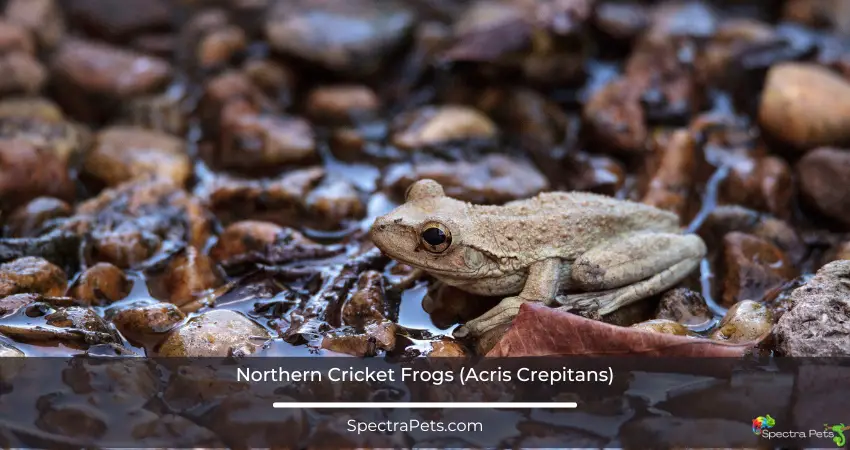
The northern cricket frog (Acheta domestica) is a small amphibian that is found throughout the United States.
Although they are small in size, they are excellent climbers and can jump up to 3 feet at one attempt which helps them to dodge predators. Also, northern cricket frogs are outstanding swimmers. Northern cricket frogs are green, yellow, gray, black, and brown in color, and they have dark spots on their backs. The frogs typically grow to be about 1.5 inches long.
These frogs live in a variety of habitats, including ponds, marshes, and streams. Most of these little frogs prefer to live in ponds and lakes where vegetation is very high. Though they belong to the tree frog family, the northern cricket frog spends little time in trees. They eat a diet of insects, including beetles, flies, and ants.
The frogs are able to adapt to changes in their environment, and their breeding time starts around June or July. However, the peak breeding period for northern cricket frogs is typically from May to August.
Their calling sound for mates sounds like cricket bugs. In Texas, this frog species is widely available.
5. Common Mexican tree frog
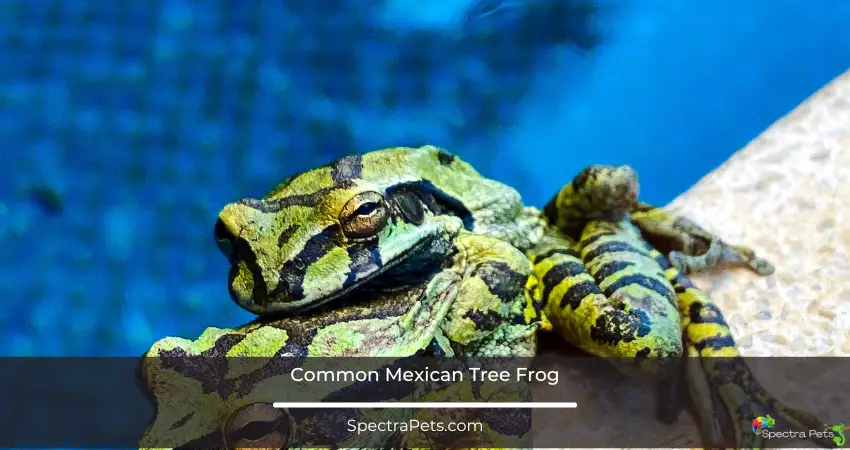
The common Mexican tree frog is a species of frog that is native to Texas. They are mostly seen in the Sonoran Desert and also in the Lower Rio Grande Valley. Sadly it is one of the listed threatened species in Texas.
The frog is typically brown and gray in color. This tree frog is also distinguished by its large size; adults can grow around four inches long. A male with an average of 3.77 inches is larger than the 3 inches female. In terms of adaptability, they are the survival masters. They start forming cocoons around their body to save themselves in the scorching summer. The common maximum tree frog is often found in both highland & lowland. They like to preserve moisture by hiding under rocks.
When it comes to breeding, they choose anytime right after an ample amount of rainfall. Their favorite breeding zone is shallow water, where the male frog call for the female and they join with the female.
Like many other amphibians, these frogs’ diet consists primarily of insects, which it catches with their long, sticky tongue.
6. Cajun Chorus Frogs
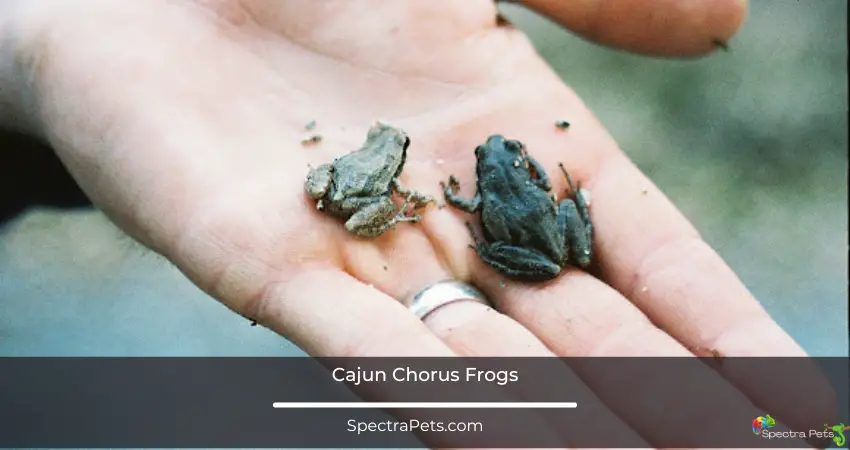
Along with Texas state, they are widely available in Louisiana, Oklahoma, and Arkansas. The Cajun Chorus Frog is a nocturnal creature that is most often found near marshes, wetlands, swamps, and flooded fields. This is because these areas provide the perfect habitat for the frog to breed and live.
The breeding time for the Cajun Chorus Frog is usually in late winter or early spring. During this time, the frog will breed, and the female lay its eggs in small clusters. Once the eggs hatch, the tadpoles will remain in the water until they are ready to transform into frogs.
Plus, the lifespan of a Cajun Chorus Frog is on average one year and few can live up to 3 years. These frogs are relatively small, with male adults reaching a length of only 1.25 inches. While the female frogs are smaller than their male counterparts.
They are also characterized by their dark brown or black skin color. You can easily see the darker stripes on their back. Also, some of the species can have 3 longitudinal stripes while others have multiple rows of spots.
All of these factors make the Cajun Chorus Frog an interesting creature to study.
7. Spotted chorus frog
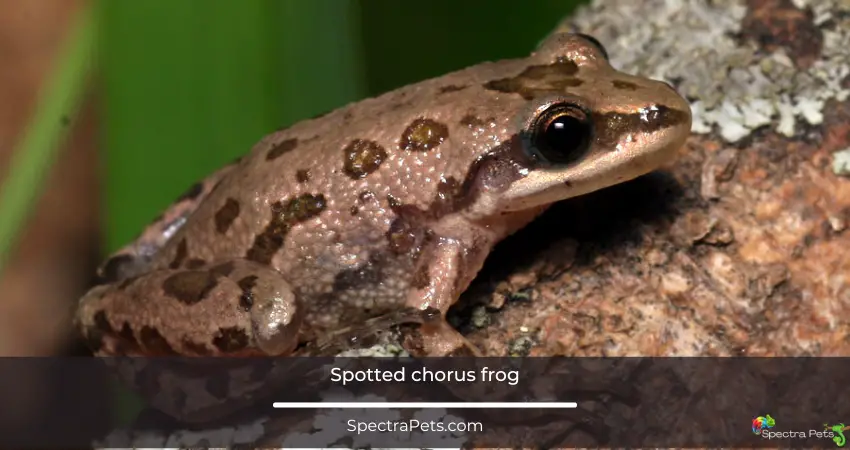
The Spotted Chorus Frog is a small frog that is found in habitats all across Central America & Mexico.
The lifespan of this tiny species is typically around 2 years. They are small frogs, usually only growing to be around one to two inches in length. In this species, the female is bulkier than the male.
When breeding season appears, they choose temporary ponds, marshes, grassy ponds, and shallow water lily ponds as their breeding place. And they mostly mate after heavy rainfall in spring and also in summer. Their skin color ranges from brown to green, and they usually have spots or patches on their backs. These frogs are mostly active at night, and they eat a variety of insects.
During the winter months, Spotted Chorus Frogs will often burrow underground to hibernate. These magnificent tree frogs are also known as Clarks; tree frogs.
8. Canyon tree frog
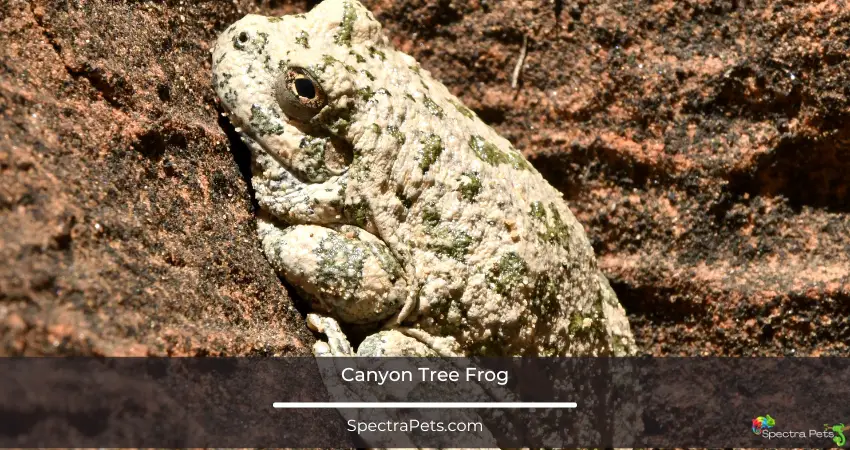
The canyon tree frog is a small amphibian that is found in the southwestern United States. These lively little creatures are known for their distinctive call, which can be heard echoing through canyons and desert landscapes.
While they are mostly gray-brown, gray, or green in color, their skin is blotchy with contrasting colors, making them difficult to spot among the rocks and plants of their natural habitat. Moreover, the breeding time of these brilliant frogs begins in March-July.
Canyon tree frogs are excellent climbers but they mostly stay on the ground. You will also see them in the trees. During the day, they sleep in crevices or beneath leaves, coming out at night to hunt for insects. For resting places, their favorite place is the pools at the bottom of canyons. Speaking of their size, they can grow up to 2-2.2’’. Spiders, ants, and little invertebrates are on the regular food list.
Although they are not currently considered endangered, the canyon tree frog faces threats from habitat loss and climate change. But with a little help from humans, these fascinating creatures will continue to thrive in the American Southwest.
9. Strecker’s chorus frog
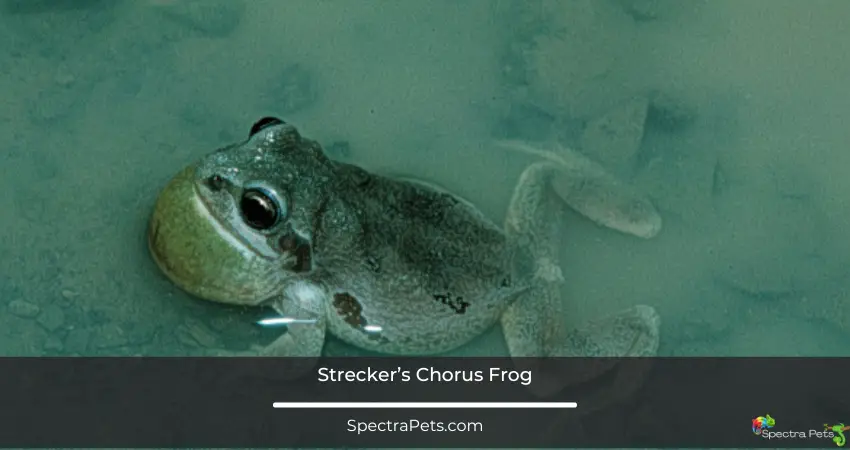
Strecker’s chorus frog is a small frog with a very big voice. Native to the United States, this species is known for its loud, strident calls, which can be heard from up to a mile away. These amphibians can reach the highest 2’’ long and the females are bigger than the male. You can find these species in Oklahoma, southern Kansas, and northwestern Louisiana states.
In Texas state, they can be seen in grasslands, canals, drainage channels, etc. These shy frogs love to keep themselves hidden under the ground. Unlike other frogs, they choose small water bodies like ponds and temporary ponds as their breeding ground. Although its call is distinctive, the frog itself is quite drab, with a brown or gray body and dark spots on its back.
This nocturnal creature can also be found in wooded areas near streams or ponds, where it feeds on insects. During the day, it hides under logs or leaves to avoid predators. The Strecker’s chorus frog is currently listed as “Least Concern” by the International Union for Conservation of Nature, but habitat loss and pollution continue to threaten this unique species.
10. Gray tree frog
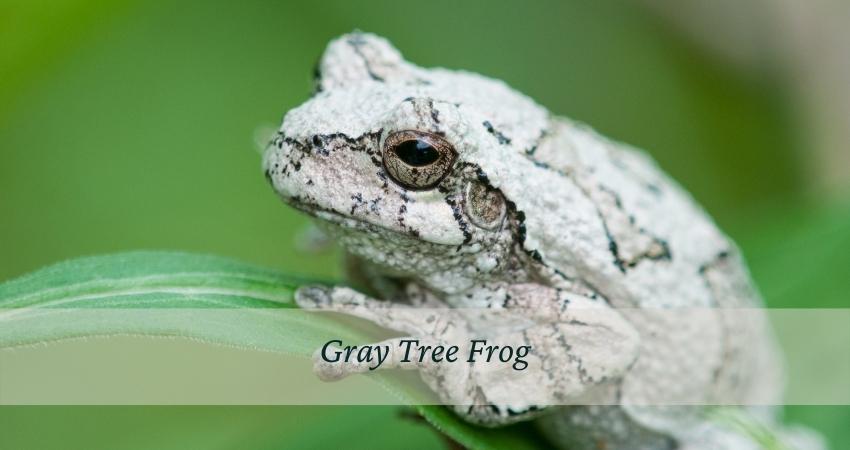
The gray tree frog is a small amphibian that is native to the eastern United States. Most commonly, they are found in the eastern and central parts of Texas.
They are named for their gray coloring, which helps them to blend in with the bark of trees. Tree frogs are able to adapt to a wide range of habitats, from swamps to woodlands. The most unique skin feature is the white spot under both of the eyes.
They are also capable of changing their skin color to match their surroundings. Gray tree frogs are most active at night when they hunt for insects to eat. During the day, they spend most of their time perched atop branches or leaves, basking in the sun. Breeding season for gray tree frogs typically takes place between May and August. After mating, the female will lay her eggs on vegetation near water. For eggs, they mostly go for fishless water bodies.
The tadpoles will hatch after about two weeks and will spend the next several months growing and developing into adults. By late summer or early fall, they will be ready to leave the water and begin their life as land-dwelling frogs.
With an average lifespan of around 7 years, these frogs are one of the best adaptive & intelligent frogs in the Texas region.
11. Spring peeper frog
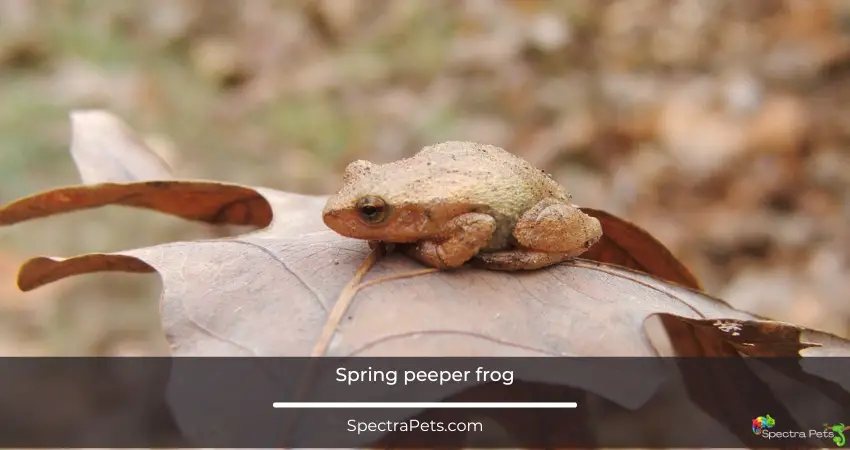
Spring peeper frogs are a common sight in Texas during the springtime. These little amphibians get their name from their habit of calling out to each other in chorus at the start of the breeding season.
While they are mainly found in wooded areas near ponds and streams, they can also be seen hopping around in gardens and yards. Although they are small, only reaching about 1.5 inches in length, spring peeper frogs are an important part of the ecosystem.
Regarding lifespan, this frog does not get a very long life which is around 3-4 years. However, this species keeps its population growth at an extremely high rate. They help to control insect populations and their tadpoles provide food for fish and other aquatic animals.
You will be surprised to know that the Spring peeper frog can survive at minus 8 egret celsius while being in a hibernation state. Their regular meal includes beetles, ants, flies, etc.
Final words
So far you already know more than any average person about the treetops in Texas. This beautiful creature can thrive more if humans keep their natural habitat safe from pollution.
Next time when you will be out for a walk or tour of the grand canyon have a look under the tree and rocks and you will find one of these chilling right there waiting for their food.
Tree Frogs Found in the Nearby States of Texas:
